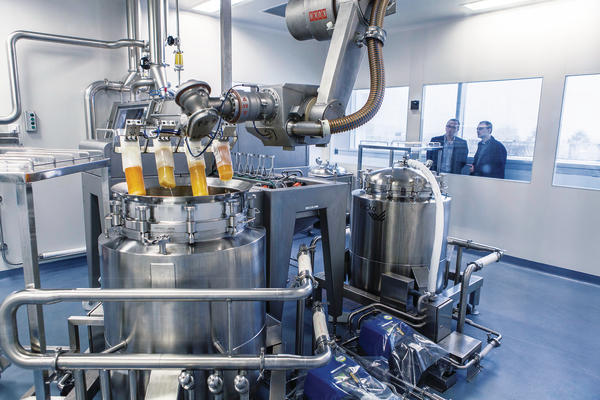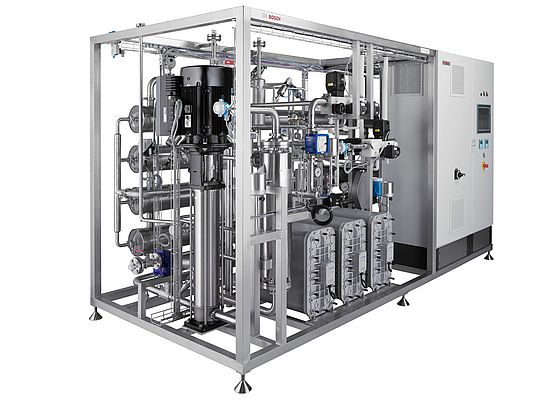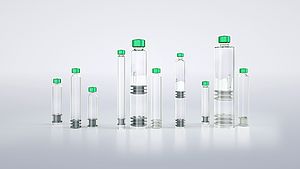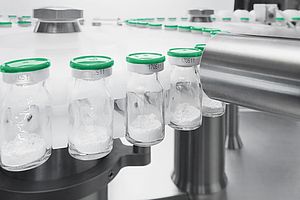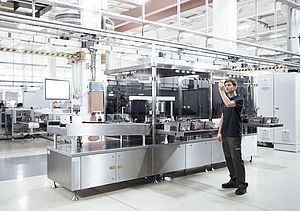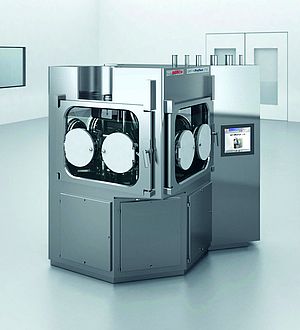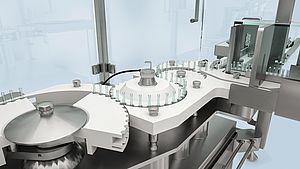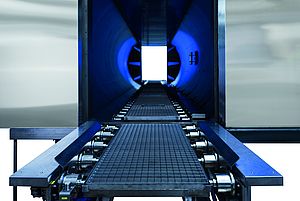Manufacturing and installing a highly purified water plant fort the Belgian Red Cross, that would fulfil the various customer requirements for water processing was a process engineering challenge.
The “Central Fractionation Unit of the Belgian Red Cross” (C.A.F.-D.C.F.) headquartered in Brussels supplies the domestic market with plasma proteins and acts as a contract manufacturer. The company produces highly purified water for cleaning and production purposes. This pharmaceutical quality product is suitable for use as water for injection. Manufacturing and installing a highly purified water plant that would fulfill the various customer requirements for water processing was a process engineering challenge.
C.A.F-D.C.F. is an independent unit of the Belgian Red Cross in Brussels. In addition to supplying Belgium with plasma products, they act as a contract supplier for coagulation factors, immunoglobulins, and albumin solutions. Highly purified water (HPW), which is more economical to produce, is used instead of water for injection (WFI) in several steps in the production process, especially in cleaning procedures. Both water qualities fulfill the same purity requirements. However, substituting WFI with HPW is only allowed in a few situations.
To increase its HPW production capacity, C.A.F.-D.C.F. required a highly purified water plant to supply washing machines and CiP (Cleaning in Place) plants. The Pharmatec GmbH, a subsidiary of Bosch Packaging Technology, delivered everything from plant engineering and construction to installation of the pipes and the complete distributor system in this turn-key project.
The way to pure water
Generating highly purified water from drinking water requires three treatment steps: pretreatment, processing, and final cleaning. Pretreatment begins with coarse filtration of the water, after which it flows through a water softening plant. The treatment step that follows involves initial reverse osmosis and final electrodeionization. Reverse osmosis withdraws the salt from the water. The medium now has only a residual salt content of one to five percent, which is further reduced by electrodeionization. The purified water (PW) generated in this manner, is now transformed into highly purified water by means of ultrafiltration.
The HPW obtained is temporarily stored in a 25 000 liter tank before being conveyed via the distributor system (the loop) to the loads throughout the facility. The distributor system must be regularly sanitized to maintain the high microbiological quality of the water. To this step, C.A.F.-D.C.F.’s customers demand different methods of sanitization in the loop. As a rule, the company prefers ozonization because of its high efficacy. At the same time, the producer must remain flexible not only in the production of its plasma products but also with respect to the respective required sanitization methods. This means being able to switch back and forth between ozonization, hot water sanitization, and pressurized water sterilization.
Very unusual combination
In ozonization, the gas is dissolved in cold water inside the tank and from there is conveyed throughout the entire loop. The thermal disinfection methods differ in the temperatures used; hot water sanitization involves a temperature of 85ºC and pressurized water sterilization of 121 ºC. In the latter method, the tank is also closed to the atmosphere to pressurize the system. Because the tank contents are drained to a defined level prior to sanitization, the free surface within the tank increases. Both gasless methods require the use of spray nozzles to sanitize the surface. The stainless spray nozzles are installed in the return line of the loop and regularly spray the tank. Yet if the water in the return line contains ozone, the spray heads will cause the ozone to escape due to a loss of pressure. This means it is no longer dissolved in the water. Therefore, the combination of hot water and ozone is highly unusual.
The situation at the site required the use of a horizontal tank. The reduced height of the water column within the tank results in the risk of too little gas being dissolved in the water during ozonization. This challenge was solved by extending the pipe that feeds ozonized water into the tank to make it as long as the entire tank.
Double valve solution
Sanitization of the loop also includes the branch lines to the consumers. Here, Pharmatec opted for a double valve solution. A compressed-air valve is placed at the beginning of every branch line and a normal valve at the end. This solution makes it possible to drain residual water from the branch line and dry the line after the load has been disconnected, which avoids microbial contamination of the line.
Even the nozzles in the plant are unique. Their design minimizes dead space and requires fewer pipe, which reduces the risk of bacterial contamination. A unique solution was also developed for removal of hot and cold water. The basic circulating temperature of HPW is 20 degrees Celsius. However, certain loads such as washing machines require a higher temperature. An additional sub-loop was constructed for these cases, which conducts the water through a heat exchanger.
Project objectives successfully achieved
All of these specific challenges were effectively addressed with customer-specific solutions. The result is a complete highly purified water plant tailored to C.A.F.-D.C.F.'s specific needs. The team consisting of seven employees implemented the project on schedule and the plant was able to go into operation in just over a year. "We are perfectly satisfied with how the plant runs," says Kris Raspoet, Assistant Manager Engineering at C.A.F.-D.C.F. "Pharmatec's experienced team focused squarely on quality and planning in order to achieve the project objectives," adds Project Manager Eric Hoogenes. This successful cooperative venture paved the way for a subsequent project for Pharmatec.


